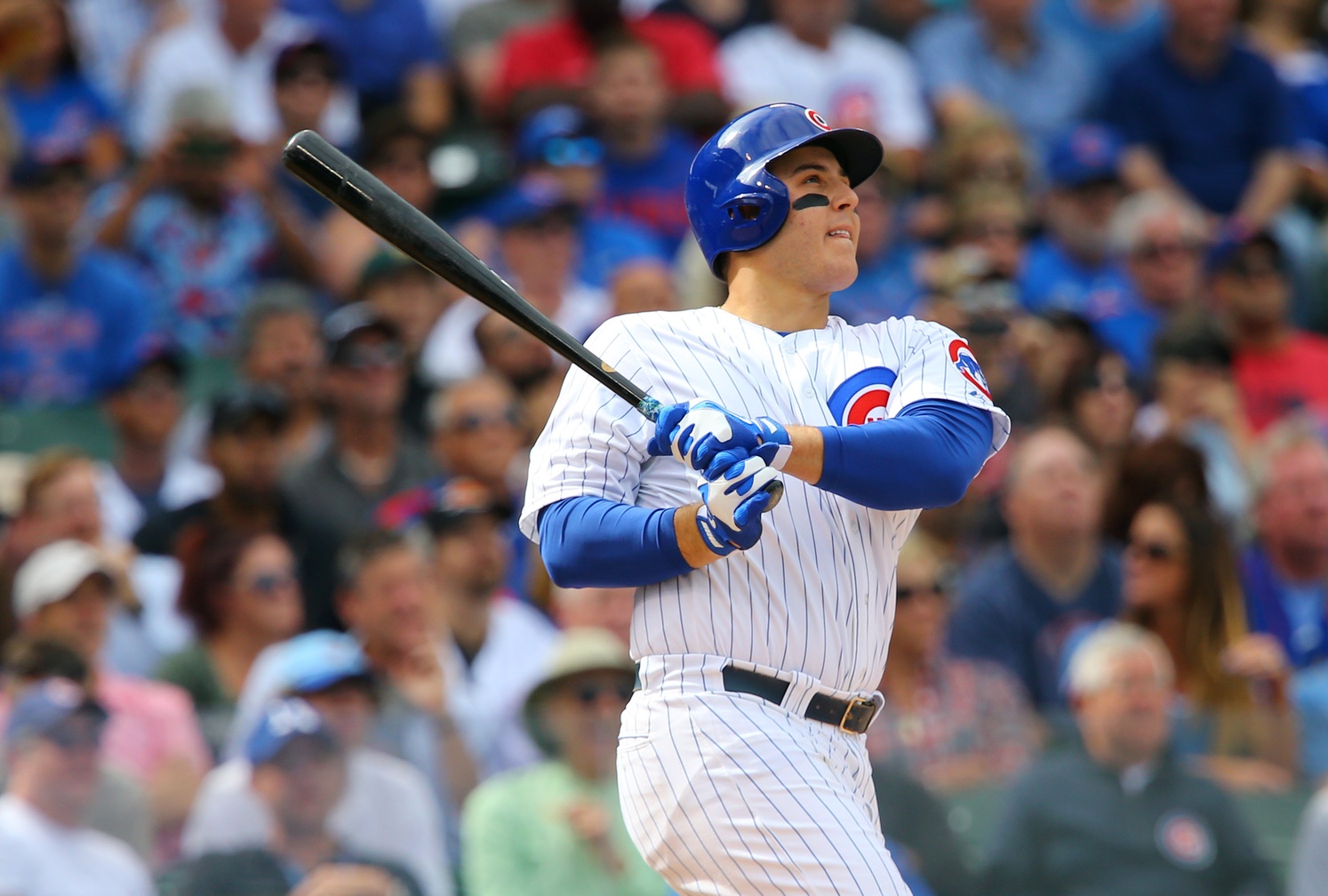My long personal nightmare is over. It ended a week or so ago, actually; I just didn’t have time to tell you so until now. For the first five and a half months of this season, Anthony Rizzo had a better OPS against left-handed pitchers than against right-handed ones. In 2014, that was true even at the end of the season (though Rizzo missed two and a half weeks with a stiff back that year). As bizarre as that is, given the unique blend of skills and attributes that makes up Rizzo’s profile, there’s a sizable number of smart people who believe that his apparent reverse platoon split (or the ghost of it, I guess) is real and sustainable. Rizzo stands right on top of the plate, which leads to a lot of lefties hitting him when they don’t finish well on a pitch and leave the ball further in than they wanted to. When they do execute, Rizzo’s position in the box and his swing combine to make it harder for a good pitch just outside the zone to fool him and draw a flailing, empty swing. These are real and legitimate reasons to believe that Rizzo has (at least) a smaller-than-average split, and it takes just a little squinting (alright, a medium amount of squinting) from there to envision a real reverse split.
In 2013, though, Rizzo had a brutal .625 OPS against left-handed pitchers, in more plate appearances (216) than he has had against them in either of 2014 and 2015 (171 and 193, respectively). He’s posted much, much better power numbers against right-handed hurlers in every year of his big-league career. Based on those facts, and on what we know about the general predictive value of single-season platoon split information, it seems safest to assume that Rizzo is still better against righties—just not as much better against them as a typical left-handed batter might be.
This one is a fairly straightforward case of split confusion. We know platoon splits are real. We know a little about how they work, and especially, we know that hardly any batters are immune to them. It could have turned out that Rizzo was genuinely unique, but the smart money said it was a matter of time before his splits normalized. Alas, Rizzo isn’t the only Cub who’s had some weird splits creep into the narrative of his season, and so I’ll use the other notable one to make a quick point, if you don’t mind.
At home, Kris Bryant has been just this side of Bryce Harper. He’s batted .311/.408/.629 at Wrigley Field this season, with 89 strikeouts against 41 walks in 314 plate appearances. On the road, though, he’s been pretty much Chase Headley: .252/.334/.374, with 105 strikeouts against 31 walks in 317 plate appearances. Most batters do hit better at home, but this is extreme. There are those who worry that Bryant can’t hack it on the road. To them, I offer this: Since August 1st, Bryant is batting .312/.371/.458 on the road. That’s in a paltry 105 plate appearances, but the point stands.
The point stands, I say, because slicing the data that second time helps illustrate the problem with the first slice. The problem is that baseball players’ stats aren’t oranges. There’s no single direction in which they can and should be sliced. There aren’t poles creating a clear line. No, the statistical records of players are like overripe peaches. Under the thin skin of the full, seasonal numbers, there’s only indefinite, undifferentiated flesh, and under that are the hard, inscrutable pits that are a player’s true talent. You can cut up all of that soft junk in the middle as much as you want, but each cross-section only decreases the structural integrity of the piece left in your hand—and you’re never any closer to being able to crack open that pit and read the peach’s DNA.
I’m not saying splits have no value. Some of them are real, and more importantly, what they stand for is real. We look at splits because we recognize—more and more with each passing year—that looking even at our best available metrics doesn’t give us that close an estimate of a player’s true talent, and that not even a close estimate of a player’s true talent at any given point would necessarily give us actionable information about even that player’s immediate future. Splits are a way of honing in on plate appearances like the ones we want to predict or analyze, in the hope that weeding out the others will remove noise and clarify things.
If a player has a good first half but a bad second half, maybe he faced tougher pitchers in the second half. If a guy has a great home pitching line but a poor one on the road, maybe he’s just happened to pitch at home a few times in a row, coinciding with a period during which he really had his mechanics down pat. Schedule and platoon advantage and weather and time of day and a thousand other variables affect player performance all the time, and they don’t even out. Of course, how good a player is on a broad level probably affects it more than any of those. Then again, variance often affects it more than how good a player is on a broad level. The lesson is: Numbers lie. They lie all the time, and often, the more specific and focused and valuable and convenient numbers seem, the more misleading they are. Anthony Rizzo is better against right-handed pitchers. Kris Bryant is a good hitter even on the road. Those cases don’t make splits meaningless or useless, but they’re good examples of how splits tend to just be smaller, messier pieces of peach.
Lead photo courtesy of Jerry Lai-USA TODAY Sports
